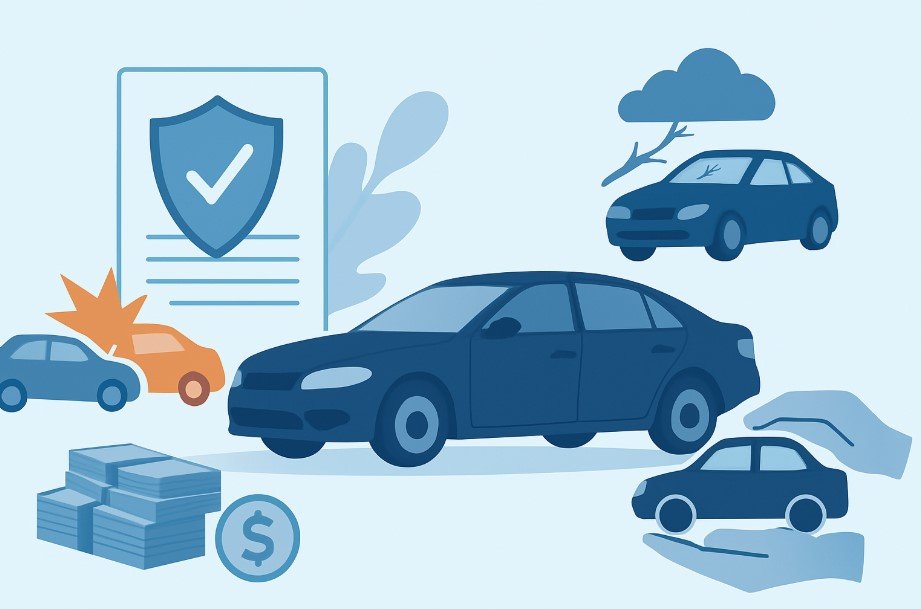Finance
Understanding the Different Types of Auto Insurance Coverage

Why Auto Insurance Matters
Auto insurance is more than just a legal requirement in most states—it protects you physically, financially, and emotionally when the unexpected occurs. It helps cover damages to your vehicle, covers injuries, and shields you from the financial stress of lawsuits or costly repairs. Being proactive by securing the right personal auto insurance ensures that, no matter what happens on the road, you don’t have to face the burden alone. Thoughtful coverage turns unforeseen expenses into manageable ones, reassuring everyday drivers and families.
Liability Coverage Explained
When shopping for personal auto insurance, it’s important to understand which coverages are essential and why they matter. One of the most critical components of a sound policy is liability insurance, which protects you from significant financial loss after an at-fault accident. Liability coverage is the most fundamental part of any personal auto insurance policy. It pays for the harm you cause to others in an accident where you are found at fault. There are two key components: bodily injury liability, covering medical expenses and, if needed, legal costs, and property damage liability, which pays for repairs to others’ vehicles or property. Carrying liability coverage is mandatory in most states, and the minimum amounts needed can differ. According to NerdWallet, it’s smart to consider coverage above state minimums, as lawsuits or serious crashes could leave you financially vulnerable otherwise.
Collision vs. Comprehensive Coverage
Beyond liability coverage, two policies protect your own vehicle from unexpected events: collision and comprehensive. Collision coverage handles damages to your car after striking another vehicle or object—helpful after an at-fault accident, a hit-and-run, or when you misjudge a tight parking spot. Comprehensive coverage includes non-crash events like theft, vandalism, hail, wildfires, or an unexpected encounter with wildlife. If you lease or have a car loan, your lender will likely require both. Even if you own your car outright, these coverages can shield you from significant repair or replacement costs, especially if your car is new or has high value.
Personal Injury Protection and Medical Payments
No one ever plans on getting hurt, but medical expenses after an accident add up quickly. Personal Injury Protection (PIP) and Medical Payments (MedPay) cover medical bills no matter who was at fault—including ambulance rides, hospitalization, and sometimes lost wages or rehabilitation. PIP is more comprehensive, even paying for certain other losses related to an accident. MedPay is simpler but still valuable, especially if you ride with others. For more information, see the easy-to-follow breakdown from Bankrate. These coverages can be particularly crucial in “no-fault” states, where each driver first turns to their own policy for injury expenses.
Uninsured and Underinsured Motorist Coverage
Approximately one in eight drivers in the U.S. is uninsured. If you’re in an accident with someone lacking sufficient (or any) insurance, uninsured motorist (UM), and underinsured motorist (UIM) coverage, step in. UM covers your injuries and property damage if the at-fault party has no insurance. UIM pays the difference when their policy limits aren’t high enough to cover your costs. These coverages can protect both you and your passengers from footing sizable medical bills or vehicle repairs following an accident with an uninsured or underinsured driver.
Optional Coverages Worth Considering
While not required by law, optional coverages like roadside assistance, rental car reimbursement, and gap coverage can offer extra peace of mind. Roadside assistance handles emergencies like tow truck service or a dead battery. Rental reimbursement helps pay for a rental when your vehicle is being repaired after a covered claim. Gap insurance is critical if you owe more on your car loan than your car is worth; it covers the “gap” if your vehicle is totaled or stolen and the insurance payout falls short. These types of coverage can be especially helpful for families, commuters, or anyone seeking complete protection.
Evaluating Your Coverage Needs
The age of your vehicle, financial situation, driving style, and risk tolerance all affect the type of coverage you require. Broad protection benefits new or expensive cars and those with active loans or leases. Older cars, or those you could repair or replace easily, might not require comprehensive or collision coverage. Life changes—including moving, marriage, or adding a teen driver to your policy—are good cues to review your options and ensure your policy always matches your needs.
-

 Social Media2 months ago
Social Media2 months agoWhat the “67” TikTok Meme Really Means
-

 Tech2 months ago
Tech2 months agoWhat To Do When Your Business Faces Network Vulnerabilities
-

 Self Improvement2 months ago
Self Improvement2 months agoUsing BCBS Rehab to Access Quality Addiction Care
-

 Games2 months ago
Games2 months agoPusoy Strategies for Play That Also Work in Pusoy Dos in English






